A Moment in Time: The Day Logan Page Died
Richard Weingroff / FHWA News 2022
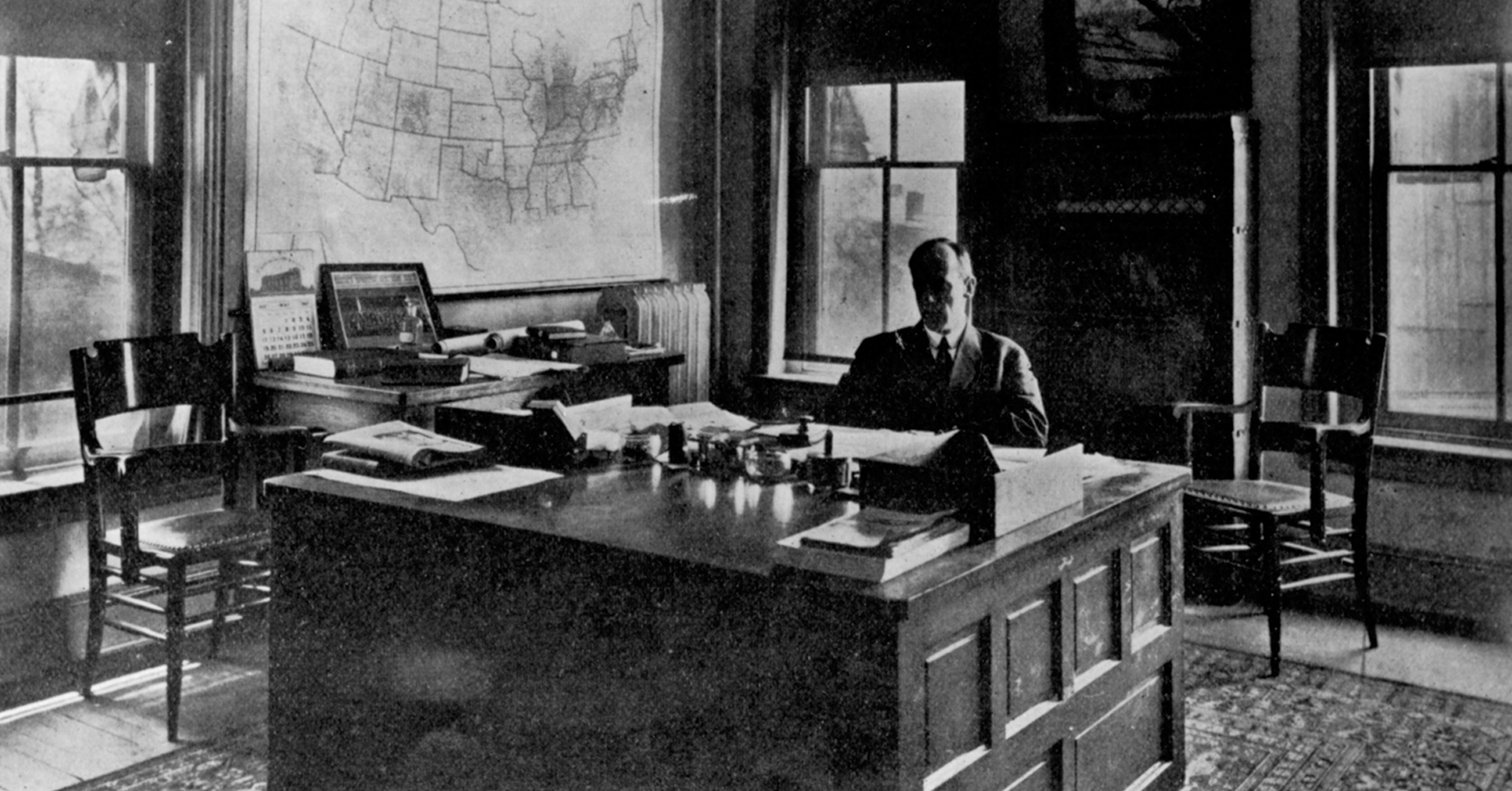
Director Logan Waller Page in his office — U.S. Office of Public Roads.
Great achievement is sometimes overshadowed by greater achievement. Logan Waller Page is an example. As Director of the Federal road agency for 13 years (1905 to 1918), he advanced the science of road building and promoted the Federal-aid highway program he helped create in 1916. However, his successor, Thomas H. MacDonald, headed the agency for 34 years (1919-1953) and became the towering figure of 20th century highway development by taking the country from the get-the-farmer-out-of-the-mud mindset to the dawn of the Interstate era, all while bolstering the Federal-aid highway program he helped put on the right track in 1921.
In December 1918, Director Page of the U.S. Bureau of Public Roads (BPR), as the agency was renamed on July 1, 1918, went to Chicago for a conference to debate the future ‐ if any ‐ of the Federal-aid highway program established by the Federal Aid Road Act of 1916. He went with ideas for answering those who wanted to abandon the Federal-aid concept and instead create a Federal Highway Commission that would build and maintain a national highway system for long-distance travelers. At this moment in time, Page died in his Chicago hotel room on December 9, 1918. The battles he had fought would have to be won by his successor if the Federal-aid concept was to survive. And they would be.
Logan Waller Page
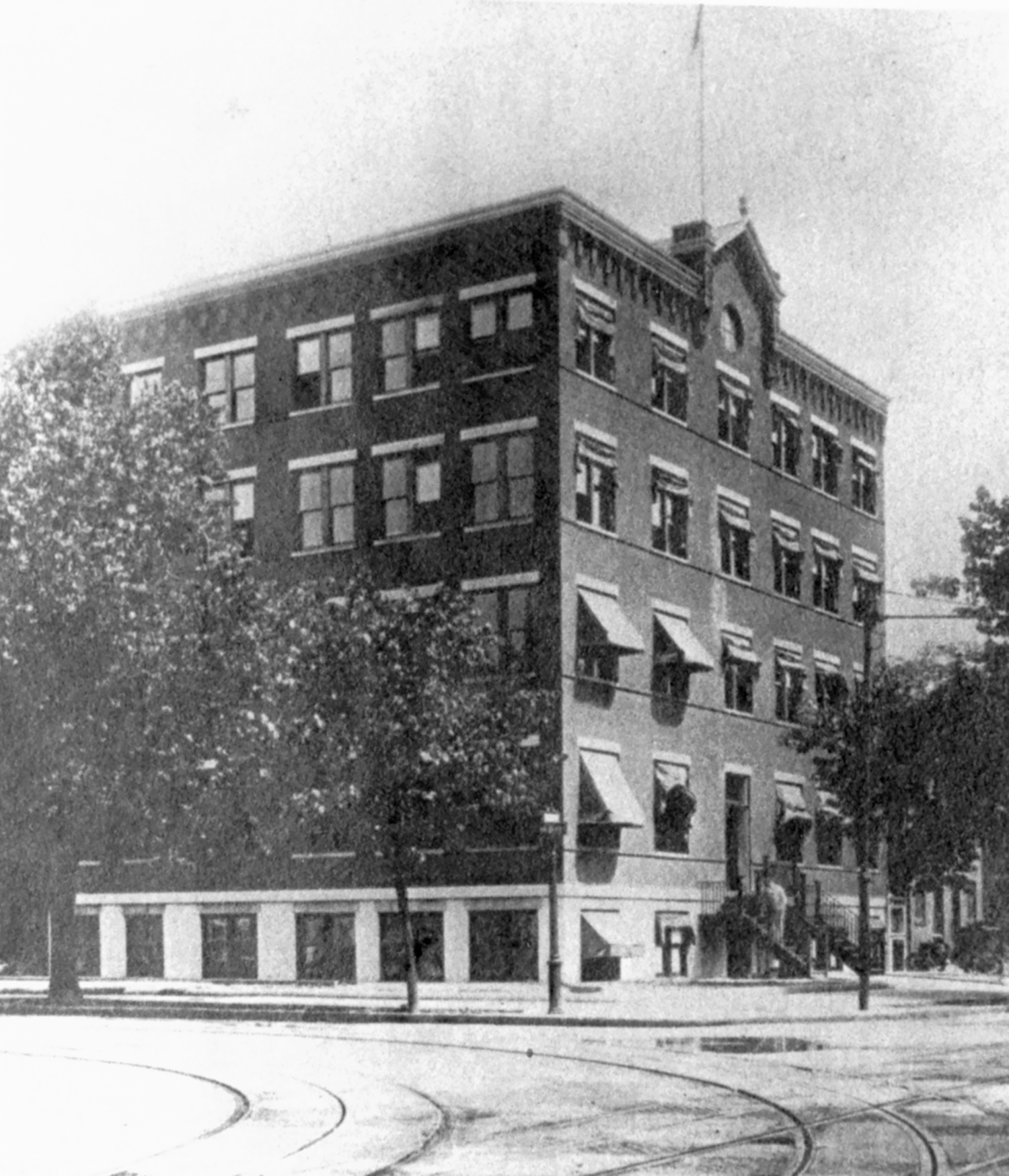
In 1906, Director Page moved the Office of Public Roads from the fourth floor of the Agriculture Department's main building to a new four-story building at 237 14th Street, SW., built in accordance with its plans. The testing lab and machine shop were on the first floor; executive and clerical offices on the second; the library, property room, and chemical and petrographical laboratories on the third floor, and the drafting room and assistant engineers' offices on the top floor. Rent was $2,000 a year.
The Agriculture Appropriation Act of March 3, 1905, upgraded the Agriculture Department's Office of Public Road Inquiries to permanent status as the Office of Public Roads (OPR). Its budget was $50,000 for Fiscal Year 1906, up from $35,000 the previous year. OPR was to be headed by a Director "who shall be a scientist and have charge of all scientific and technical work" (salary: $2,500). This language intentionally excluded the Director at the time, Martin Dodge (1899-1905), an Ohio lawyer who helped his agency achieve permanent status, but had conflicts of interest with private road promoters despite warnings from the Secretary of Agriculture.
Dodge's successor, Logan Page, was the embodiment of the Progressive Era, one in which governments placed their faith in scientific experts. They solved society's problems by applying apolitical judgment, based on data, not political taint or corrupt influence.
Born in Richmond, Virginia, Page graduated from the Virginia Polytechnic Institute in 1889 and was one of the first graduates of the highway engineering program that his uncle, Professor Nathaniel S. Shaler, had begun at Harvard. Page married Professor Shaler's daughter Anne. After Harvard, Page served as geologist and testing engineer for the Massachusetts State Highway Commission (MSHC), the Nation's first State highway agency, as well as director of the testing laboratory of the Lawrence Scientific School at Harvard (1893-1900). (Professor Shaler was one of the commission's first three commissioners, 1893-1898.) To learn about laboratory testing from the acknowledged international leader, Page enrolled in France's National School of Bridges and Roads.
For 1900, Congress appropriated an additional $6,000 for extending the work of the small road office by creating a field structure. Dodge divided the country into four divisions, including an Eastern Division covering the Northeastern States and those as far south as Pennsylvania and as far west as Ohio. He appointed Logan Page as Special Agent for the division, but he would soon leave for a new assignment.
Dodge established a road materials testing laboratory in the Agriculture Department's Bureau of Chemistry, with the support of Agriculture Secretary James W. Wilson. The Secretary thought the States and territories (Arizona, New Mexico, and Oklahoma) should build their own roads, but believed "the Federal Government should do scientific work for the whole country that all the states cannot do quite so well." To head the laboratory, Dodge selected Page. By 1905, when Page became OPR Director, the laboratory was the primary scientific laboratory on road building materials.

Under Logan Page, the well-equipped Road Material Laboratory included a Deval Machine, which was used for abrasion test for determining the resistance to wear. Page described the purpose: In this test, 11 pounds of rock broken to about the size used on highways is placed in an iron cylinder, which is attached to a shaft at an angle of 30 degrees. This cylinder is revolved for 5 hours at the rate of 2,000 revolutions per hour, the fragments of rock wearing against each other and the walls of the cylinder. When 10,000 revolutions are completed, the material is taken out and the amount of wear is determined. The result is expressed in the percentage of wear under 1-16 of an inch in size, and the French co-efficient of wear is also given.
Under Director Page, OPR continued the promotional activities of his predecessors, General Roy Stone (1893-1899) and Dodge (1899-1905). Page expanded the object-lesson road and experimental road programs they had initiated. He launched experimental roads to test practical surfaces, such as earth-oil mixtures, portland cement concrete, and paving brick. He even revived the Good Roads Trains that Dodge, in his worst conflict of interest, had participated in from 1901 to 1903. The new Good Roads Trains ran from 1911 to 1916 to promote road building and demonstrate best practices. In addition, Page, like Stone and Dodge, developed model State-aid legislation and encouraged State legislatures to adopt them.
Even more than his predecessors, Page launched OPR on a scientific evaluation of road building and on gathering the technical data ‐ the lifeblood of the Progressives ‐ for drawing sound conclusions. For example, he conducted scientific analyses of why automobiles destroyed the surface of macadam pavements, which had been the best stone surface for roads during the horse-and-wagon era. The tests included speed runs on macadam roads, with motion picture cameras filming the impact of the tires on the surface. These tests demonstrated that macadam surfaces were nearing their end because they could not survive under motor vehicle tires.
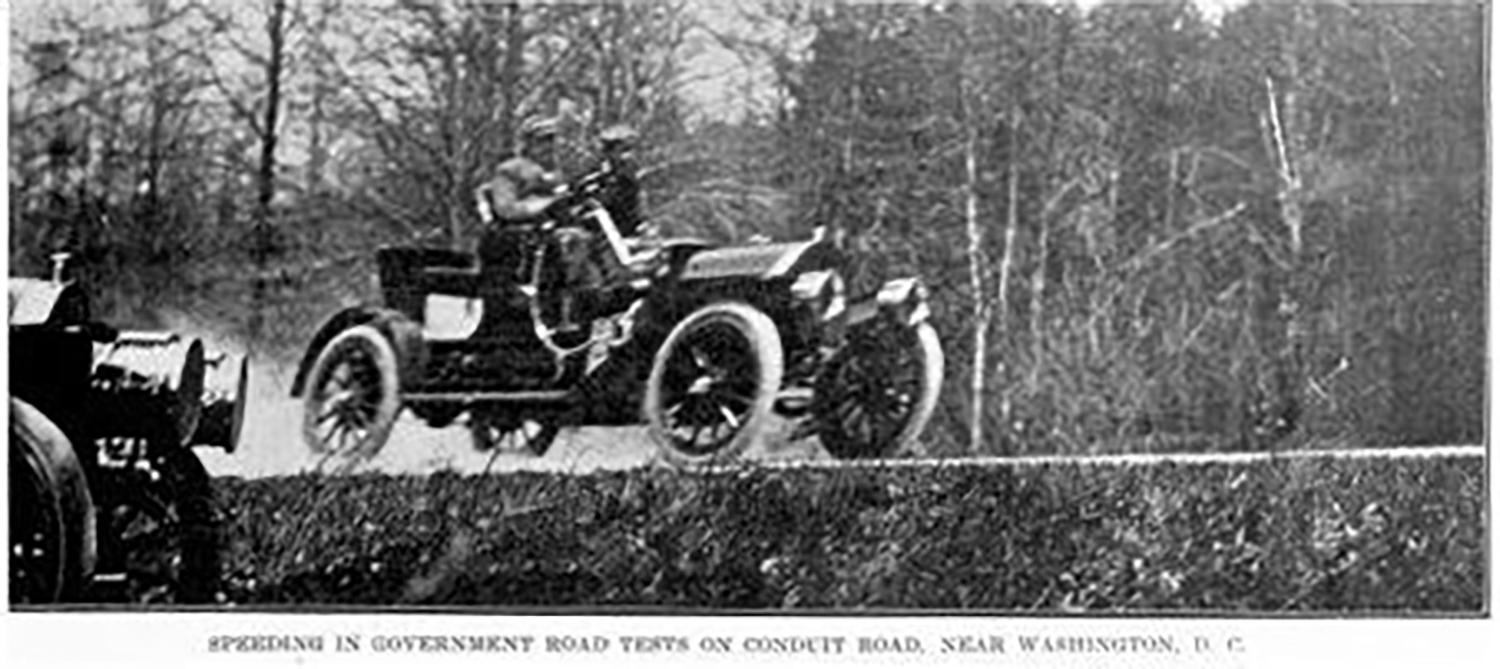
In 1909, after blocking off a 2-mile section of Conduit Road (now MacArthur Boulevard) above Cabin John Bridge in Washington, Director Page conducted experiment with high speed automobiles (50-60 m.p.h.) to test the effect of speed on macadam roads. Instantaneous cameras and moving picture cameras recorded the efforts for study.
To further his scientific concepts, Page launched a formal engineer training program within OPR in 1905. After a year of varied experience, trainees were appointed to the position of Junior Highway Engineer at $900 per year. Many trainee graduates eventually left OPR to become a cadre of scientific leaders in the growing number of State highway agencies.
Page also expanded OPR's laboratory and research facilities. In 1906, he moved the testing laboratory into a rented four-story building. In 1912, he opened a research center at the Agriculture Department's experimental farm in Arlington, Virginia; after several moves, the center evolved into the present Turner-Fairbank Highway Research Center in McLean, Virginia.
Further, he took the lead in creating the American Association for Highway Improvement in 1910 as an umbrella group for all road interests, including the State highway agencies (the group was later renamed the American Highway Association, which disbanded in 1918). Page, appointed president of the association, saw it as a vehicle for promoting not the good roads cause but his model State-aid legislation.
Resolutions adopted in 1911 at the association's First American Road Congress in Richmond reflected Page's views on the legislative proposals. Delegates endorsed Federal funding to encourage States to build good roads; State road construction should be under the direction of an experienced highway engineer; and appropriations should be linked to a requirement for proper maintenance after construction. These ideas became the foundation for the Federal Aid Road Act of 1916, which he fought hard to make a reality and to implement.
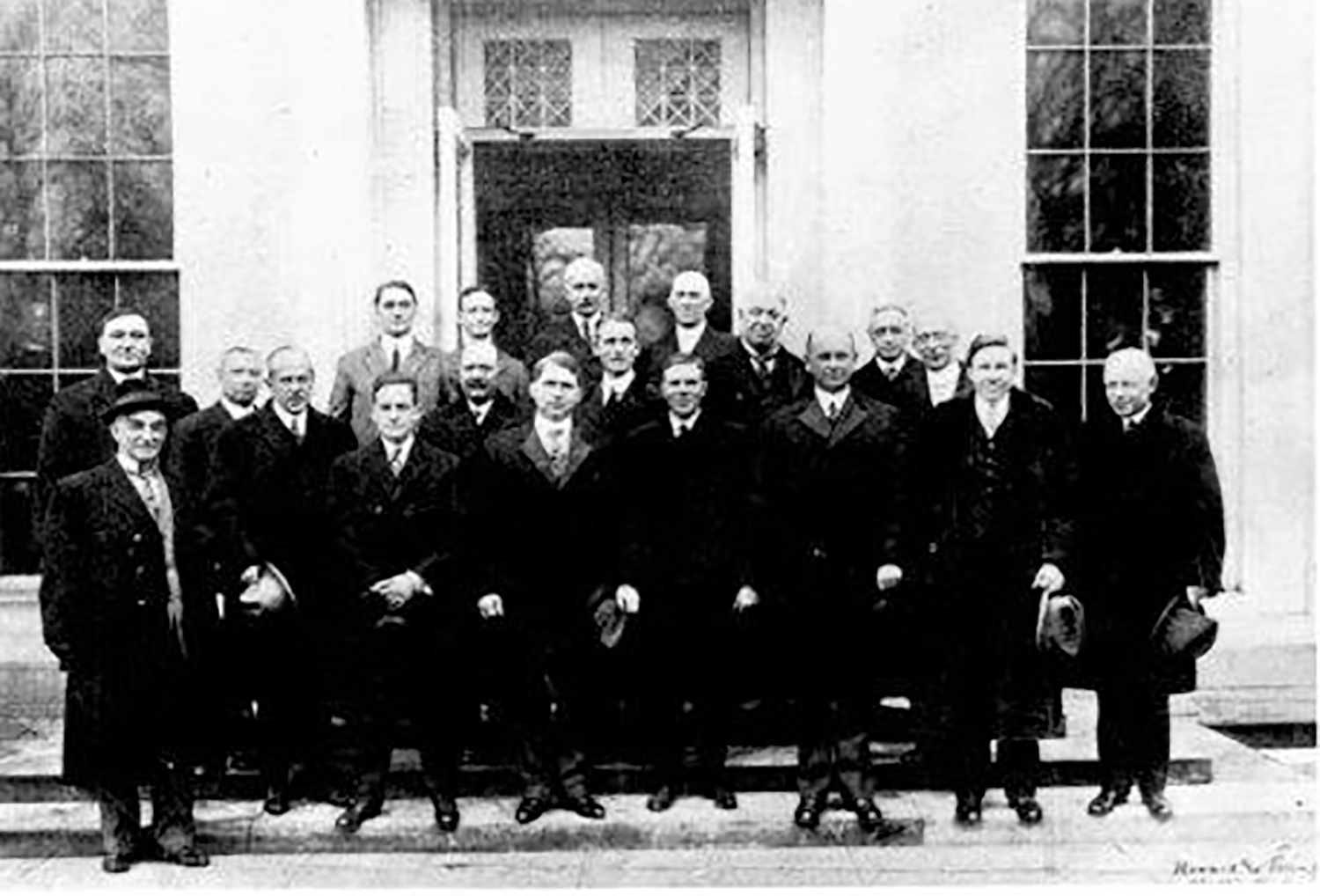
In December 1914, Director Page joined State highway leaders who formed the American Association of State Highway Officials. While in Washington, the founders visited President Woodrow Wilson in the White House then posed for a picture immediately after the visit. Page is third from the left, holding a hat. Henry G. Shirley of Maryland, AASHO's first president, is in the front row, fourth from the right.
Although the association was intended to be a national voice for all elements of the highway community, some State highway officials believed they needed their own organization to reflect the State highway agencies' viewpoint. Page endorsed the idea and suggested it be limited to the official heads of State highway agencies and their immediate staff, ". . . thus making the organization strictly official and enabling full and frank consideration of questions, particularly those of a technical character untrammeled by commercialism or popular prejudices." The States formed the American Association of State Highway Officials (AASHO) in 1914.
A Prickly Attitude
Page saw road building as a task for engineers and scientists, and he did not sugarcoat his views. While building OPR into the national leader in the science of road building, he exhibited prickly impatience with those who failed to live up to his standards. For example, he characterized road administration in 1907 as involving "a miniature army of unskilled county road overseers ‐ an army in which all are officers and none are privates." The situation was little improved by 1910, when he said that half the States "are operating under practically the same road laws as prevailed in England when America was a colony," meaning "in a wasteful, intermittent and wholly ineffective manner, productive of no good results."
In OPR's annual report for 1910, Page's impatience with "non-scientists," particularly holders of patents, in the road community came through. "Many worthless road preparations have been and are at present being manufactured and sold to the public through ignorance on the part of both producer and consumer . . . . These materials are sold under trade names, and as a rule carry no valid guarantee of quality. Specifications for such materials are therefore needed for the protection of the public." To combat the "human vultures," Page worked with the scientific community to draft specifications spelling out how best to build and improve roads and bridges.
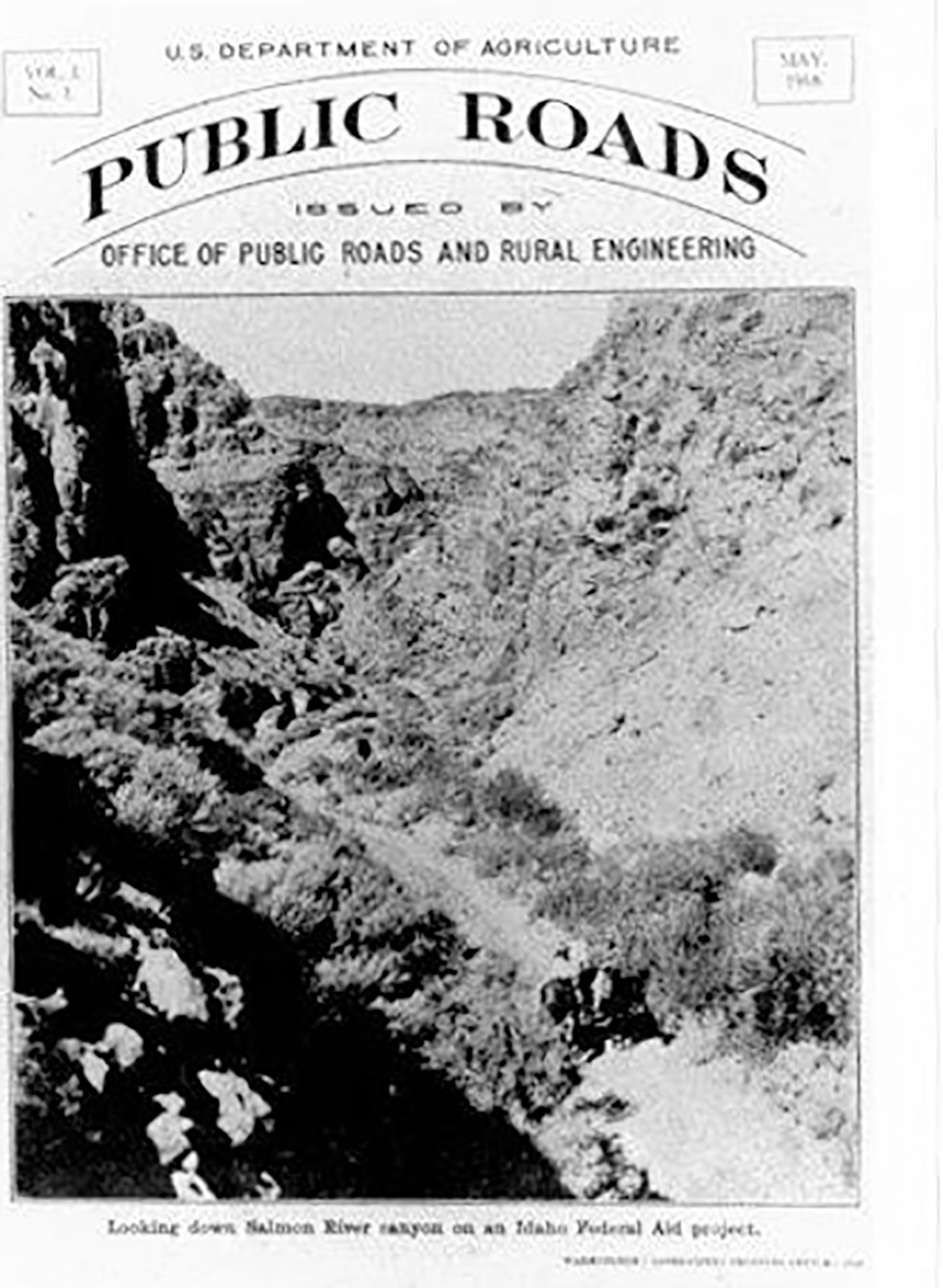
Director Logan Page, who advocated the science of road building, established Public Roads magazine. The first issue, shown here, was dated May 1918. The magazine remains one of FHWA's premier publications.
He did not mind singling out individuals. In 1911, Page said of the leader of the National Good Roads Association that, "His plan is intended to benefit no one but himself, and the funds are to go to no one but himself." When OPR published D. Ward King's manual on the widely used King Split Log Drag for maintenance of earth roads, King objected to changes the agency had made in the text. Page supported the drag, but added that, ". . . when people like Mr. King advertise that they can show the public how to build roads without money, and that roads do not need drainage, merely for the purpose of [making] money out of the people, it is simply absurd."
In 1912, Page was told that a county surveyor could supervise road construction as well as a road engineer: "It would be just as sensible to appoint an astrologer to build the good roads."
By 1916, he estimated that $50 million was wasted each year "by the carelessness and incompetence of the men charged with the supervision and administration of the public highways of the country." Road administration should be "under men holding office solely upon their merit," not selected on their "value as political workers." Farmers and merchants did not care "whether the road was built and is maintained by a Democrat or a Republican." The ideal roadbuilder engaged in a "deliberate searching for an adequate solution" and possessed "an aversion for buncombe." Engineers should "analyze facts without prejudice," something that State legislators could not do. He didn't blame the road officials, saying "they want the money wasted upon them in the way of salary, and need it." However, the "the political system" that hired them "must be destroyed" to achieve "any substantial improvement in the character and efficiency of the men." That is why the 1916 Act required that any State "desiring to avail itself of the benefits of this act" must have a State highway department.
Death of a Leader
President Woodrow Wilson signed the Federal Aid Road Act of 1916 on July 11. In April 1917, the United States joined what we now call World War I. When it ended in November 1918, the Federal-aid highway program had little to show for the multi-year work that had gone into its creation 2 years earlier. By July 1918, only five projects, totaling 17.6 miles, had been completed.
Aside from the difficulties of construction when the country's resources were focused on winning the war, the flaws in the original program had become clear. Page cited three flaws that limited its effectiveness. First, he cited the limitation of Federal-aid funds to "rural post roads," defined as any road outside cities with a population of 2,500, on which the U.S. mails "now or may hereafter be transported." BPR encouraged States to focus on main highways, but often the main roads were not classified as rural post roads; railroads carried the mail over long distances. Second, the 1916 Act limited Federal participation to $10,000 per mile (exclusive of bridges of more than 20 feet clear span). Because of inflation, the Federal promise of paying 50 percent of eligible costs could not be applied by 1918 "in the construction of the higher type roads" needed, especially by large, heavily populated States. Finally, the amount of funding limited the program. Although the amounts were reasonable at the start of the program ‐ $5 million in 1917, gradually increasing to $25 million in 1921 ‐ Congress did not anticipate the enthusiasm the program would inspire. Many legislatures were embarrassed after appropriating taxes to pay the State's 50-percent share of costs only to find that BPR could not provide its share for all the projects. In short, the problems encouraged those who favored a Federal Highway Commission that would construct national interstate highways.
Moreover, the cooperative spirit at the heart of the program had been dampened by BPR's heavy handed review of State plans. Professor Bruce E. Seely, in Building the American Highway System (1987), explained, "OPR engineers were convinced 'the present system is generally a sort of rat hole through which to squander the road fund,' especially after one state submitted plans for a road that would have frequently been under water. As a result, the OPR conducted very thorough inspections of state plans in both the district and national offices. Some of the blame rested on the states, which provided complete drawings for only half of the proposed projects. But equal responsibility belonged to overzealous and inflexible federal engineers."
By 1918, with State-BPR cooperation improving, Page was seeking support for legislative fixes he had prepared, with AASHO's support, to address problems with the 1916 Act. The fixes would broaden the definition of "rural post road" and increase the eligible cost per mile. But the drive for long-distance roads was still strong. As Seely noted, by "late 1918 Page's efforts to amend the federal-aid bill . . . were being swamped by calls for a national highway commission."
The shape of the postwar Federal road program was the main theme of a Joint Highway Congress in Chicago, December 11-12, 1918. AASHO and the Highway Industries Association (HIA), a trade group formed during the war to represent auto and truck manufacturers, sponsored the congress. One of HIA's founders, S. M. Williams of the Garford Motor Truck Company, explained that the goal was to, "Build more highways and build them promptly, even at the expense of tens of millions, or of hundreds of millions, if necessary, must be the order of the day, or else the nation will be tremendously handicapped in this great contest."
Page was scheduled to address the congress on "Highway Control by the Federal Government Under War Conditions," a subject he knew well. He had served on the Highway Transport Committee of the Council of National Defense, established in November 1917, and, beginning in June 1918, was chairman of the United States Highways Council, which reviewed all proposed highway projects and vetoed those that were not essential to winning the war.
Before heading to Chicago, Page went to Denver for conferences with BPR's western district engineers, each of whom oversaw work in several States, and the U.S. Forest Service. He also met with State road officials to get a sense of road conditions in the west. He intended to meet with his 10 regional assistant engineers while in Chicago, then embark on a cross-country road inspection trip.
On December 8, 1918, he was at the Hotel La Salle in Chicago attending a meeting of AASHO's Executive Committee. He became ill during dinner and retired to his room, where he died a few hours later on December 9. Page, 48 years old, was survived by his wife Anne and their 9-year old son Lee. His death was attributed to heart disease.
Tributes to a Leader
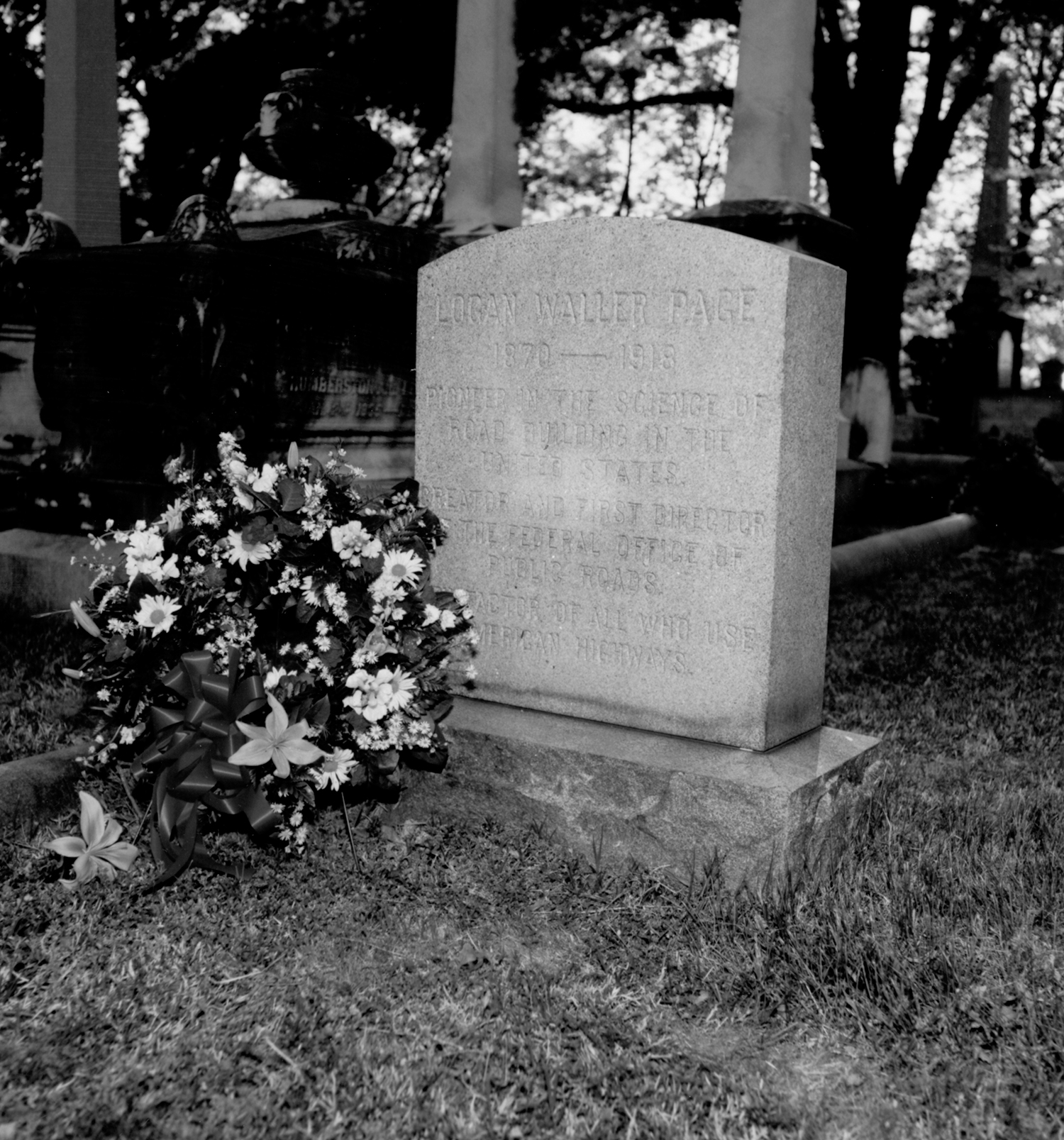
Logan Page, who died on December 9, 1918, was buried in Richmond's Hollywood Cemetery. His headstone refers to him as a "Pioneer in the Science of Road Building in the United States, Creator and First Director of the of the Federal Office of Public Roads" and as a "Benefactor of All Who Use American Highways." Administrator Rodney E. Slater placed the flowers shown in the illustration on April 25, 1995.
On December 11, 1918, A. D. Williams, chairman-engineer of the West Virginia State Highway Commission, delivered a tribute to Page during AASHO's annual meeting in Chicago after the joint congress. He referred to Page as "our companion, and friend, who by word and deed gave his time, energy and strength, his 'all' we might say, as a pioneer of road building in America." In talking with his colleagues just before his death, Page revealed "his deep interest in the question near his heart." Perhaps, Williams suggested, his hard work to manage road work during the war and his efforts fighting long-distance road advocates contributed to his early death. "His struggles with bureaus and committees, coupled with the anxiety he felt for what might be done here took their tolls." Page was guided "by unselfish motives" and "an unselfish and divine impulse of the soul that compels him to contribute of his life that part which makes other lives brighter and the world better, that part which will help to lift the load from his fellow man."
Williams could not ignore Page's impatient, prickly personality. "He had his faults as all men have; he would not have been human nor would he have been a man without them." But, as with all honest men, he "was sometimes misunderstood, misquoted, and misjudged by those who would further selfish interests." Personal opinions might diverge, but "every man who came into contact with him was compelled to recognize that there was a sincerity and fixedness of purpose backed up by a spirit of fairness."
He added, "Those of us who were permitted to be near Mr. Page learned to love him. Those of use who fought with and against him, agreed and disagreed with him, learned to appreciate him because of his honesty of purpose."
Williams summed up the man and his accomplishments. "Logan Waller Page has contributed much to smooth the ways of travel, to turn aside the stones over which we stumble, to widen the avenues along which we must work, and has made safer, brighter and lighter the Nation's pathways for the feet of commerce, liberty and happiness . . . . His story is written, his life speaks, his works live and will live long after we have passed from this hall."
Colonel William D. Sohier, chairman of the MSHC, said, "Mr. Page in some ways did not look like much of a fighter, but, believe me, he was one of the hardest fighters that we have ever had." He was, Sohier said, "really a very sick man, and he knew it. He told me three years ago that he knew he was going to die from a sudden attack; he did not believe he was going to live two years, but that he would die with his boots on ‐ and he did." Agreeing that Page's war-related work "was very largely responsible for his untimely death," Sohier suggested that people would consider Page "one of the central figures around which the road building and road improvement of the United States . . . have grown up."
AASHO adopted a tribute to the man who helped create the organization. He was "the Nation's real pioneer in scientific highway construction." Throughout his life, he "contributed unceasingly his entire strength, energies, and time towards the establishment of better methods and more scientific statutes for all of the states and the nation." More than anyone, he stood "for scientific road construction, for education, and the use of educated and experienced engineers in carrying out road work." Along the way, he was, "inevitably, firmly and unalterably opposed to political appointments and to any interference or influence by outside interested parties."
Secretary of Agriculture David F. Houston, a longtime friend, called Page "the real pioneer of the modern good roads movement," who had done the country a great service by organizing the Federal-aid highway program, "one of the most valuable in the nation." BPR was "a great monument to him."
BPR agreed that Page's duties and responsibilities "were further intensified by the worries and perplexities which mounted higher and higher after war was declared." Such problems "would have overtaxed a constitution much more rugged than his." The tribute observed that, "It is a sad commentary that when the work of a lifetime had seemed just ready to open out into a field of great national import, Mr. Page's death came so suddenly and so unannounced." That work would continue. "It is a great movement and has national and enthusiastic public support. But the work which he did is not forgotten or unappreciated by the road builders of the country."
Page was buried in Richmond's Hollywood Cemetery. His headstone refers to him as a "Pioneer in the Science of Road Building in the United States, Creator and First Director of the of the Federal Office of Public Roads" and as a "Benefactor of All Who Use American Highways."
Had Page not been stricken, he could have done little to change the outcome of the joint congress. AASHO's Federal-aid supporters were outnumbered by national highway system boosters. Delegates approved a proposal by E. J. Mehren, editor of Engineering News-Record, calling for a Federal Highway Commission to build a 50,000-mile national highway system that would include 2 percent of all roads, pass through every State, and, in Mehren's view, be built for $1.25 billion. At $100 million a year, it could be built in 12 and a half years.
The Post Office Appropriation Act of February 28, 1919, modified the Federal-aid program along the lines Page had suggested to address the concerns.
A Towering Accomplishment
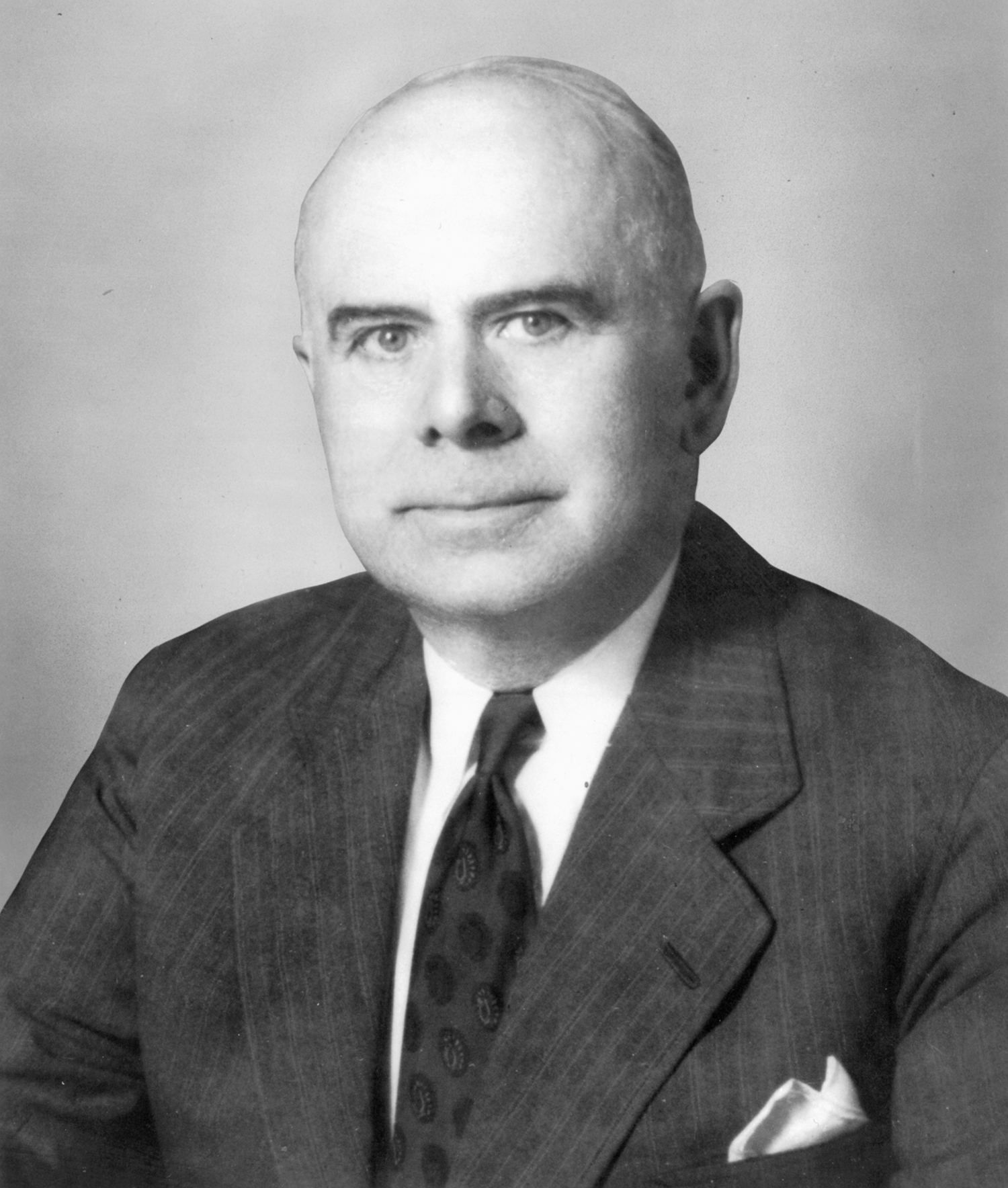
For all of Logan Page's accomplishments, Thomas H. MacDonald eclipsed them. MacDonald headed the Federal road agency from 1919 to 1953, during which time he took the agency through the "Golden Age" of road building in the 1920s, the Depression of the 1930s, and World War II in the 1940s, to the brink of the Interstate era in the 1950s. After his death on April 7, 1957, an associate called him "a statesman who built an enduring monument to himself, not so much in roads and bridges as in the lives of people."
At AASHO's suggestion, Secretary Houston selected Thomas H. MacDonald, chief engineer of Iowa's State Highway Commission, as Page's successor. Under MacDonald's influence, the Federal Highway Act of 1921 continued the basic Federal-aid highway program, but focused much of the funding on a primary system of highways that were "interstate in character," thus satisfying those who favored Federal-aid and long-distance road advocates. They did not know it at the time, but the battle between them was over.
MacDonald would improve upon Page's work, enhancing BPR's partnerships with the State highway agencies and other highway interests while retaining the scientific approach Page had nurtured ‐ but without the friction Page sometimes generated. Perhaps learning from that friction, MacDonald encouraged what today would be called "buy in" to the program by, for example, involving State highway officials as advisors and as partners in the new Highway Research Board. In the 1920s, with increased funding, a more focused program, and the end to wartime restrictions, MacDonald oversaw what many contemporary observers considered the third "Golden Age" of roadbuilding after Ancient Rome and 19th century France.
Sometimes, a person comes along who is uniquely suited to his or her era. At a moment of time on December 9, 1918, just such a man, the towering figure of his profession, passed away and took his era with him, to be succeeded by the true start of the State-Federal partnership in 1921, under MacDonald, that is at the heart of today's Federal-aid highway program. As Secretary Houston said of Page, "Not only the Nation and the States, but also people in all parts of the country are greatly indebted to him, and are living fuller and more satisfactory lives because of what he did."

